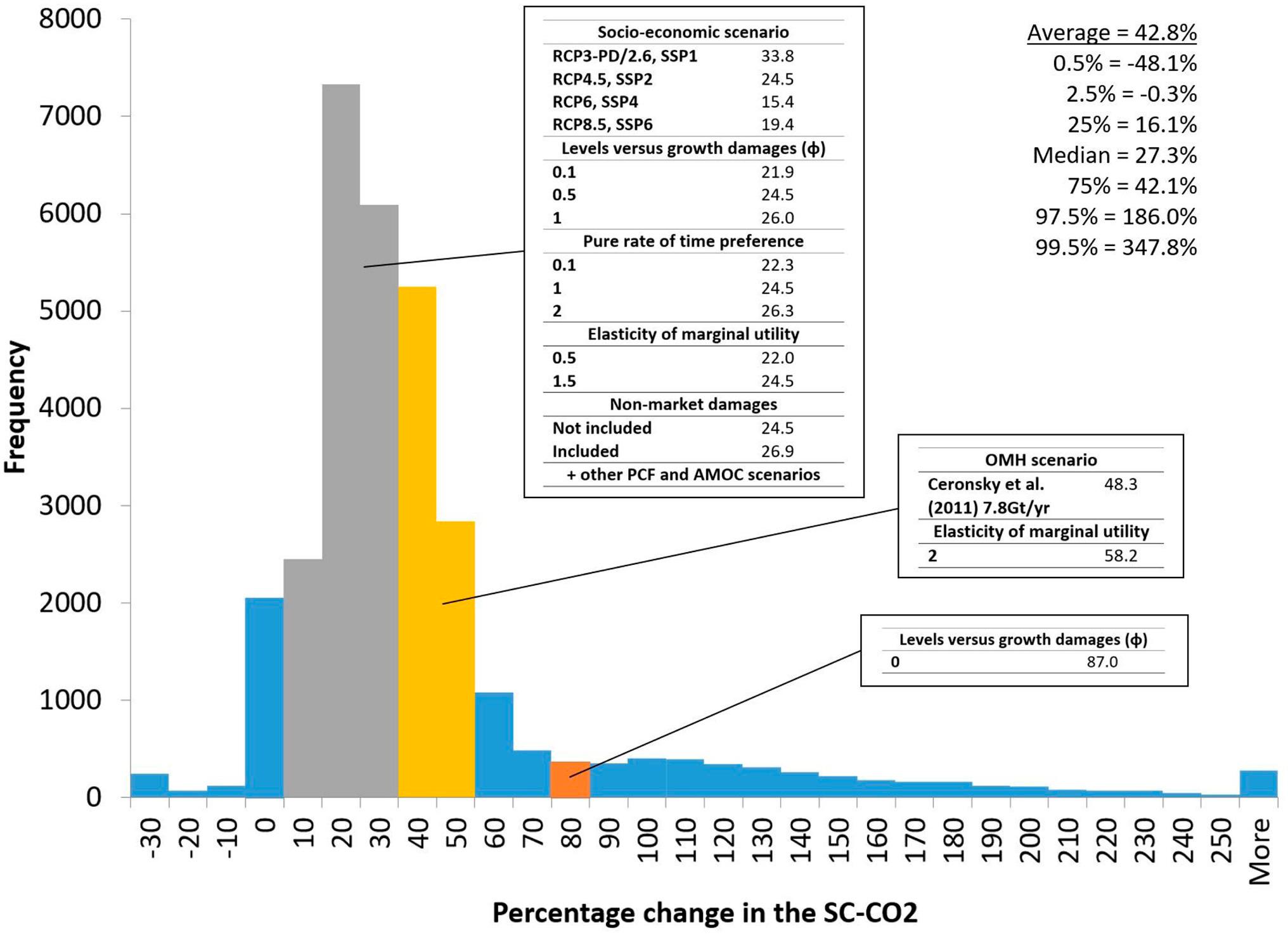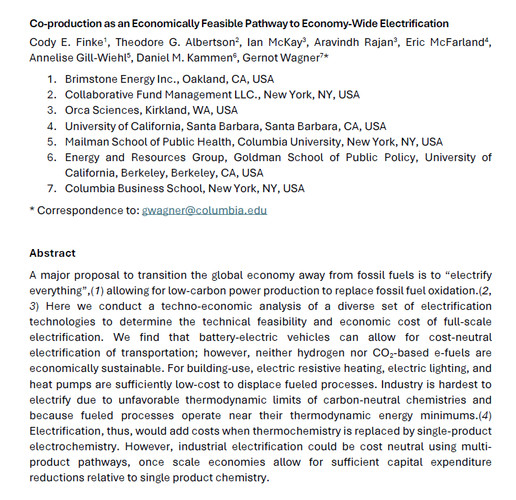Economic impacts of tipping points in the climate system
by Simon Dietz, James Rising, Thomas Stoerk, and Gernot Wagner

Significance:
Tipping points in the climate system are one of the principal reasons for concern about climate change. Climate economists have only recently begun incorporating them in economic models. We synthesize this emerging literature and provide unified, geophysically realistic estimates of the economic impacts of eight climate tipping points with an emphasis on the social cost of carbon, a key policy input.
Abstract:
Climate scientists have long emphasized the importance of climate tipping points like thawing permafrost, ice sheet disintegration, and changes in atmospheric circulation. Yet, save for a few fragmented studies, climate economics has either ignored them or represented them in highly stylized ways. We provide unified estimates of the economic impacts of all eight climate tipping points covered in the economic literature so far using a meta-analytic integrated assessment model (IAM) with a modular structure. The model includes national-level climate damages from rising temperatures and sea levels for 180 countries, calibrated on detailed econometric evidence and simulation modeling. Collectively, climate tipping points increase the social cost of carbon (SCC) by ∼25% in our main specification. The distribution is positively skewed, however. We estimate an ∼10% chance of climate tipping points more than doubling the SCC. Accordingly, climate tipping points increase global economic risk. A spatial analysis shows that they increase economic losses almost everywhere. The tipping points with the largest effects are dissociation of ocean methane hydrates and thawing permafrost. Most of our numbers are probable underestimates, given that some tipping points, tipping point interactions, and impact channels have not been covered in the literature so far; however, our method of structural meta-analysis means that future modeling of climate tipping points can be integrated with relative ease, and we present a reduced-form tipping points damage function that could be incorporated in other IAMs.
climate tipping points | social cost of carbon | integrated assessment model | climate risk
Full paper: "Economic impacts of tipping points in the climate system" (24 August 2021; PDF; 95-page online appendix).
LSE project homepage; META code via GitHub.
My Bloomberg Green Risky Climate column: "Costly tipping points" (20 August 2021).
Subsequent reply to a letter published in PNAS: "Reply to Keen et al.: Dietz et al. modeling of climate tipping points is informative even if estimates are a probable lower bound" (19 May 2022).
Presentations: AERE, June 2019; LSE, November 2019; ASSA, January 2020; EGU, May 2020; EAERE, June 2020; NBER, July 2021.


